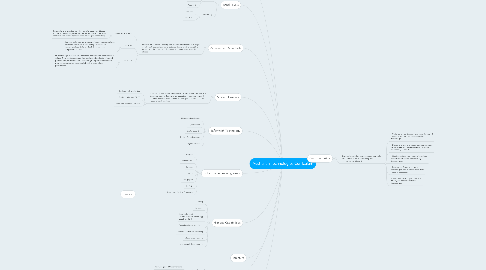
1. Subjects:
1.1. Digital Technology
1.1.1. Knowledge and Understanding
1.1.2. Process and Production Skills
1.2. Design and Technology
1.2.1. Knowledge and Understanding
1.2.2. Process and Production Skills
2. Structure
3. Strands:
4. Cross-Curriculum priorities
4.1. Aboriginal and Torres Strait Islander Histories and Culture.
4.2. Asian and Australia's Engagment with Asia.
4.3. Sustainability
5. General Capabilities
5.1. Literacy
5.2. Numeracy
5.3. Information and Communication Technology capability (ICT).
5.4. Critical and creative thinking
5.5. Personal and social capability
5.6. Ethical understanding
5.7. Intercultural Understanding
6. Links to other learning areas:
6.1. English
6.2. Mathematics
6.3. Science
6.4. History
6.5. Geography
6.6. The Arts
6.7. Health and Physical Eductaion
7. Safety with Technology
7.1. Health and wellbeing
7.2. Cyber Safety
7.3. Digital Security
7.4. Ethical Considerations
7.5. Legal Protocol
8. Student Diversity
8.1. A curriculum that allows the educator to provide all students with the opportunity to learn and be educated in an accepting and nurturing environment - catering for the specific and individual needs of each student.
8.1.1. Students with disabilities
8.1.2. Students who are ESL/D
8.1.3. Gifted and talented students
9. Achievement Standards
9.1. Indicate the quality of learning that should be achieved at a range of different levels. Achievement standards are used to assist the educator in the diagnostic, formative and summative assessing stages.
9.1.1. Foundation - Year 2
9.1.1.1. Purposeful and directed play that aims to develop attitudes of care in relation to places and resources. Students explore materials and technologies and use drawing and modelling.
9.1.2. Years 3-6
9.1.2.1. Students build and grow on experiences, such as; school, family and in the wider community. This aims to encourage students to gradually become more independent citizens.
9.1.3. Years 7-10
9.1.3.1. Students begin to question established communities, practises and values. They use technologies, knowledge and understanding and process and production skills. They design to problem solve and produce own creative ideas, while building upon global perspectives.
10. Band Levels
10.1. Primary
10.1.1. Foundation - Year 2
10.1.2. Year 3 -4
10.1.3. Year 5- 6
10.2. Secondary
10.2.1. Year 7- 8
10.2.2. Year 9- 10
11. Content
11.1. Content Descriptors
11.1.1. The descriptors from the ACARA website provide educators with knowledge about a specific learning area through the strands and sub-strands. This enables educators to design a series of learning sequences to outline the relevant information and implement it in the teaching and learning process, as they are particular aims that students must achieve.
11.2. Content Elaborations
11.2.1. these provide different ways of approaching the content descriptors, attached to each sub-strand for the teaching and learning process.
12. Curriculum Aims
12.1. Develop knowledge, understanding and skills for students to work individually and collaboratively. Students:
12.1.1. - Undertsand how technologies have developed over time and are creative when using technology.
12.1.2. - Design and create products using appropriate technologies that have been effectively and responsibly selected.
12.1.3. - Create solutions to a range of problems and/or opportunities by evaluating technologies.
12.1.4. - Become confident when using technologies and use them for a wide range of purposes.
12.1.5. -Investigate, design, plan, manage, create, produce and evaluate technologies.
